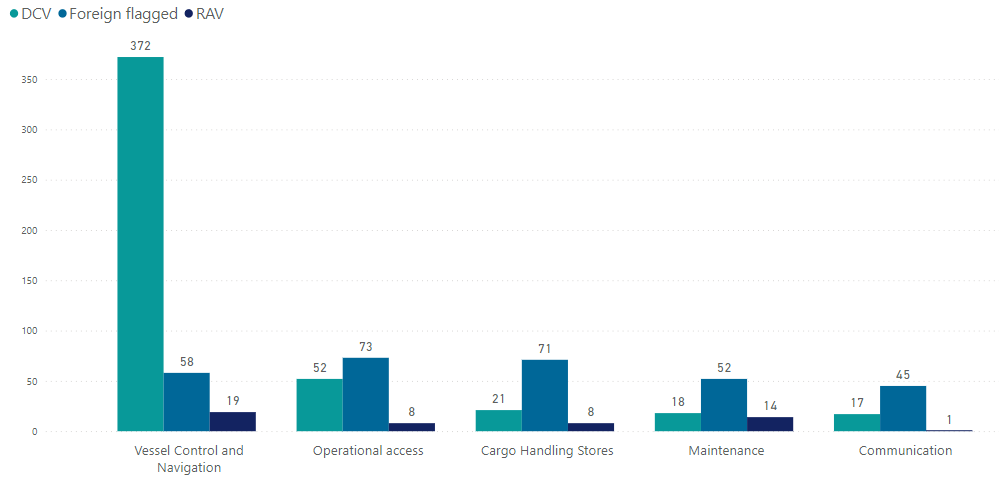Operational occurrence types on DCVs
By far the most frequent operational occurrence sub-type on DCVs involved control and navigation of the vessel. The next most frequent sub-types were operational access, cargo handling and stores, maintenance and communication.
The distribution of vessel control and navigation incidents across DCV classes is consistent with the overall incident distribution for 2021, and has remained consistent since 2019. This indicates that issues around vessel control and navigation are occurring across the DCV fleet and are not concentrated within a particular use category.

Operation occurrence types on RAVs and foreign-flagged vessels
Vessel control and navigation was the most frequent operational sub-type reported in RAV and foreign-flagged incidents in 2021, followed by maintenance. The next most frequent sub-types were cargo handling and stores, and vessel control and navigation.
With operational access and maintenance continuing to feature, AMSA has issued Marine Notices on pilot transfer arrangements and pilot ladders. AMSA also issued a Marine Notice and Safety Bulletin on the importance of planned maintenance, and will focus on maintenance during port State control inspections.
Safety framework coding analyses and findings – Domestic Commercial Vessels
This year’s report includes analysis from findings coded using the safety framework from 109 investigation reports over 2020-2021 which is contained in the Annual overview for marine incidents 2021 PDF2.75 MB.
The majority of safety factors identified from the investigation reports related to people and internal organisational issues. People factors refer to observable behaviours such as decisions, actions and/or inaction by crew that increased risk. Safety management processes formed the largest percentage of internal organisational issues. Investigation reports in 2021 identified shortfalls associated with the processes an organisation uses to establish, maintain, and otherwise ensure the effectiveness of its risk controls as factors affecting onboard safety. Safety procedures and risk assessments continue to represent the majority of safety management process issues and hence continue to be included as key focus activities within the National Compliance Plan.